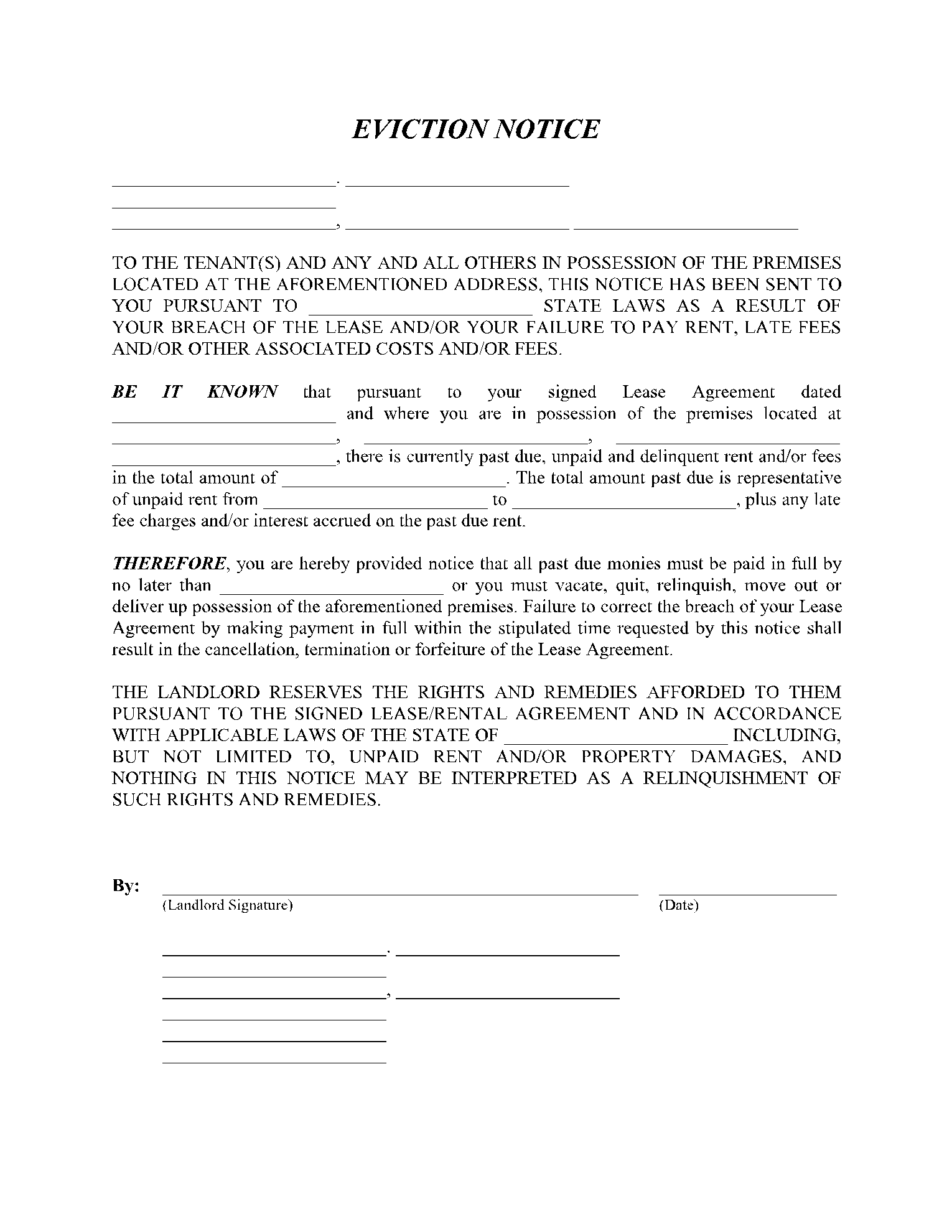A California eviction notice cannot be considered as the eviction itself. When the landlord gives the tenant an eviction notice, they still have options and rights. The eviction notice can refer to as a legal document. But, it must meet the necessary requirements for a court to consider it valid.
An eviction process informs the tenant that a legal process of eviction shall begin. It may happen when the tenant does not accept the landlord’s terms. If the issue belongs to a specific reason, the landlord can also grant the tenant anywhere between 30 to 60 days to respond to the eviction notice. When the tenant puts forth the problem and adheres to the legal requirements, the tenant can delay the process for weeks or even months. They can also prevent the eviction from happening altogether.
When Can I Use the California Eviction Notice?
A property owner can use a California eviction notice when they do not want the tenant to continue with the rental agreement. This may also involve any other party who possesses the property, thereby enabling them to move out of the possession. The landlords usually hand out California eviction notices to the tenants if the tenants have not paid the rent, damaged the property, or violated the lease agreement in any other manner.
The landlord may send an eviction notice if the tenant has violated any provisions made in the contract. For example, if the contract states that only two people can live but six people stay on the property than the agreement states or keeping pets, and so on.
How Long Does it Take to Evict a Tenant in California?
After the tenant receives a California eviction notice, it can take anywhere between 45 to 75 days to evict someone. Numerous factors influence such a situation. Some of them comprise the location of the property, and the type of notice served to the tenant. It further involves the situations that encompasses the eviction and the court’s workload. In the case contests the eviction, it can then take between 60 and 90 days. The notice process does contribute to the total time the California eviction process takes. It times right from the date of the first serving the notice. Therefore, when the landlord offers a 60-day notice to vacate to the tenant, the time frame for the unlawful detainer runs after those 60 days expire.
The time taken for the eviction process depends upon when the landlord files for unlawful detainer with the court and also on the California county you belong to. After this, it depends upon the nature of the case and if the tenant readies for the eviction. If the tenant agrees for the eviction, then the judge shall make the judgement. The tenant may receive a default judgement if the tenant does not respond to the California eviction notice. Whether the tenant gets a default or judge’s ruling, the court then issues a Writ of Possession.
What Happens After a 3-Day Notice to Pay Rent or Quit in California?
When any landlord issues a 3-day notice to pay rent or quit in California, they send a notice to the tenant that they violate their lease agreement for not paying the rent. Further, they have 3 days to pay it or move out. If the tenant does not comply, the landlord can legally go ahead and file for eviction.
Conclusion
Eviction notice forms become very crucial and require many details from both parties for them to be considered officially by a court. The residential evictions may be complicated and a long process. You can obtain the Writ of Possession and understand the default judgement.
